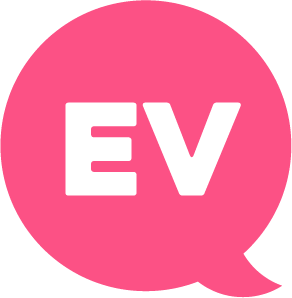Evan Carlson | 06 février 2024
6 Must-Have Capabilities for Your Knowledge Management Tools
The organizational need for effective knowledge management capabilities has grown significantly since the corporate discipline was first introduced in the 1990s. With increased operational complexity, shrinking teams, greater staff churn, and higher customer expectations all contributing to this.
Much research has been conducted into what makes for successful knowledge management, including the people-related aspects of encouraging both knowledge sharing and exploitation through use and reuse of knowledge. In fact, HDI research from the end of 2018 showed that knowledge management technology is already employed by 87% of support organizations and is the second-most important technology for providing successful support.1
The top 10 Must-Have Technologies for Providing Successful Support

Source: HDI, “2018 Technical Support Practices & Salary Report”
HDI’s research also mentions that even though 22% of organizations that use knowledge management are successful, most of them use knowledge management only to solve 30% of their ticket requests.3 So what can you do to improve your knowledge management strategy?
This blog looks at six key facets of knowledge management tools that will help your organization finally succeed with knowledge sharing and reap the associated benefits.
6 Key Knowledge Management Tool Capabilities
These are provided in no particular order, because having one working well while another isn't is insufficient for knowledge management success. For instance, the best knowledge capture capabilities in the world will be useless if no one can access and use the knowledge when they need it.
1. The ease of knowledge capture
While this starts with the ease of initially capturing knowledge that might be more than just text, you should also consider the ability to curate, enhance, and publish it. This includes amending or updating knowledge as and when needed. For instance, using self-help technology to simplify some of the processes, or aligning the organization with Knowledge-Center Service (KCS) best practices.
2. The ease of finding and accessing knowledge
Self-service portals are one way to provide access to knowledge, but an omnichannel approach that includes access to collaboration platforms such as Microsoft Teams, Slack, Salesforce, etc., dramatically increases engagement because it lives where users work. Knowledge should also be created to suit the language and needs of the respective knowledge seekers, including IT staff, employees and customers.
3. The ease of use
While this overlaps with the previous bullet (in terms of the ease of finding/accessing knowledge and a simple and intuitive user experience), it also applies to how the tool or vendor guidance helps steer knowledge creators in publishing knowledge artifacts that are easy to consume. For instance, using conciseness over longer-form complexity whenever possible. The use of multimedia such as videos, step-by-step guides and images can also facilitate the user experience.
4. Available feedback mechanisms
This is a set of usually qualitative capabilities that range from “thumbs up or down,” ranking up or down, to scoring knowledge articles. It’s very much the reporting of opinions related to whether a knowledge artifact is unhelpful, too complicated or technical, out of date, wrongly served up as an answer, or similar. Think of it as crowdsourced knowledge management improvement opportunities.
5. Performance measurement and relevancy reviews
There are two elements here. The ability to track engagement—to see usage and what’s being accessed (as well as the feedback above)—is a much-needed indicator of whether your knowledge management initiative is successful. This is in both standalone terms and in changing the help-channel volume mix to a quicker and lower-cost method. It also feeds into the identification of improvements for the knowledge management capability as a whole, plus whether specific knowledge artifacts are achieving what they should.
6. Added intelligence
There’s a range of available artificial intelligence (AI) capabilities to consider here as well:
- Chatbots for end users and virtual agents for support staff—augmenting both their capabilities and knowledge levels
- AI capabilities that assist with knowledge gap identification and the creation of new knowledge artifacts
- Intelligent search capabilities such as context-driven “knowledge promotion” within self-service
So that’s my list of six must-have capabilities for knowledge management tools. Access to knowledge is increasingly important, no matter where the knowledge sharing is needed within an organization. For IT service and support teams, the need for effective knowledge management has certainly increased in the last half-decade and will increase as technology changes.
If you want to learn more about overcoming your knowledge management challenges, download our latest eBook, The Ultimate Guide for Getting Knowledge Management Right for Self-Service”, which offers you 7 tips on how to deliver powerful self-service and self-help capabilities to your employees.
1,2,3 HDI’s 2018 Technical Support Practices & Salary Report
Subscribe to Email Updates
Evan Carlson
Evan Carlson joined EasyVista in 2010 as the first employee in North America. He is currently the Chief Revenue Officer responsible for revenue growth and profitability across marketing, sales, services, support and customer success. Carlson previously served as VP of Sales at EasyVista to establish and grow the business with empowered teams, innovative sales strategies, and long-term customer relationships. Before EasyVista, Carlson held leadership roles for technology vendors including OPNET, Optinuity (acquired by CA Technologies), and Visual Networks (acquired by Danaher Corporation).




